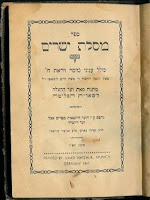Dear editor –
I recently saw signs in local botei medrash about a recording of Novhardoker niggunim recently put together in Eretz Yisroel. I called the number given and acquired it and was very impressed. I suspect that it would be of interest to others as well. I therefore wrote the following review of it, which I would like to share with Yated readers with your permission. Thanks for your assistance and all your good work.
Lizeicher nishmas kedoshei Novhardok, Hy”d.
The Novhardok Yeshiva movement was one of the largest, if not the largest such movement, in Eastern Europe pre-WWII. After the terrible churban, some remnants survived, notably in Eretz Yisroel, France, and the USA. Prominent gedolim of today with Novhardok connections include Rav Yitzchok Dov Koppelman of Lucerne, as well as Rav Yaakov Galinsky, and Rav Chaim Kanievsky shlita. The movement did not regain its pre-war strength and size afterward, however.
Consequently, although many people, especially from the younger doros, have heard of Novhardok, they often lack comprehensive knowledge of the deep Torah and mussar spirituality that Novhardok stood for.
One of the aspects of Novhardok that is little known today, is the niggunei hisorerus of the movement.
Novhardok had special Yiddish niggunim, composed by Novhardoker leaders, such as Rav Nissan Bobruisker and Rav Dov Budnik zt”l, Hy”d, which were sung on various occasions for chizuk in avodas Hashem.
Recently, in Eretz Yisroel, a breakthrough has come about, in which an excellent, high-quality musical release, entitled ‘Niggunei Hisorerus Novhardok’, with thirteen tracks of Novhardoker niggunim, has been put out. The niggunim have been recorded in a modern, up-to-date fashion with modern technology and musical accomplishment, with a talented vocalist. Additionally, accompanying the musical release is a booklet of approximately sixty pages, comprising a foreword and lyrics of the songs in Yiddish, with Hebrew translation alongside, line by line, which can be used to follow the songs and better absorb their deeper meanings. There are also a few historical photographs of Novhardoker Yeshiva talmidim and hanholo on the packaging.
The songs shed light on the times from which they came, with references such as not bowing to the hammer and sickle (communist symbol), redifos hadas (religious persecutions), and crossing the border between Russia and Poland. Some of the songs reflect mussar beliefs and practices, at times specifically Novhardok ones. There is mention in one song, for example, of having a notebook with a pen, part of a mussar practice in which people worked on their middos, while another envisions baalei mussar without a measure when Moshiach comes. One song with fifteen parts, focuses on different middos and themes, among them hatovo, amitzus, histapkus, hashgocho, bitachon, zehirus, zikkui horabim, and teshuvoh. The songs vary, with some being slower and others more ‘lebedig’ (lively). One particularly lebedig song is ‘Lebedig Yankel’, which (in two versions) talks about when Moshiach will come. There is also a short song at the end sung by Rav Yaakov Galinsky shlit”a.
The release gives a feeling of what it was to be a Novhardoker in the old days and helps us understand the spiritual power of Novhardok, which helped it grow to have thousands of talmidim pre WWII.
One needn’t be a Novhardoker talmid, or son, grandson, or great-grandson of one to appreciate and enjoy the recording. Anyone with a curiosity about, and gefil (feeling) for, the pre-WWII European Yeshiva world, should find it of interest. Even if your Yiddish is less than perfect, the line by line Hebrew translation make it possible for you to enjoy it as well.
It is available in both CD and cassette.
In our trying times, the spiritual strength such niggunim can offer is surely a welcome development. As we approach Kabbolas haTorah, niggunei hisorerus can help us and we can bring this forgotten aspect of pre WWII Yeshiva life back to life.





